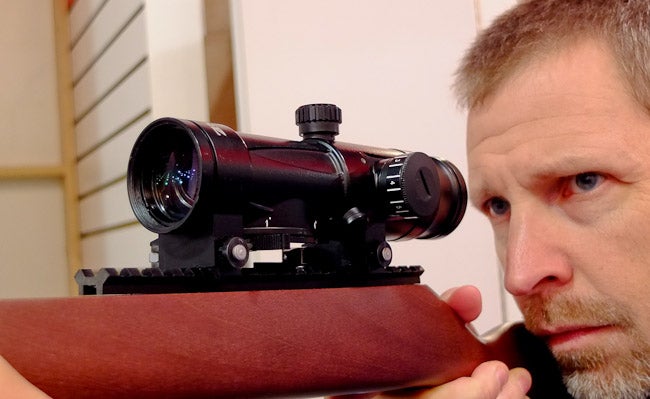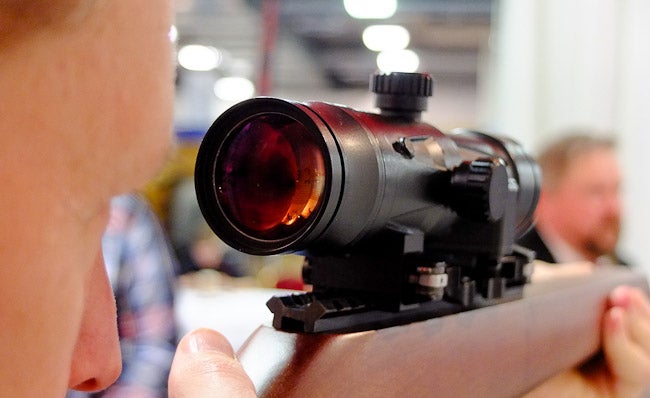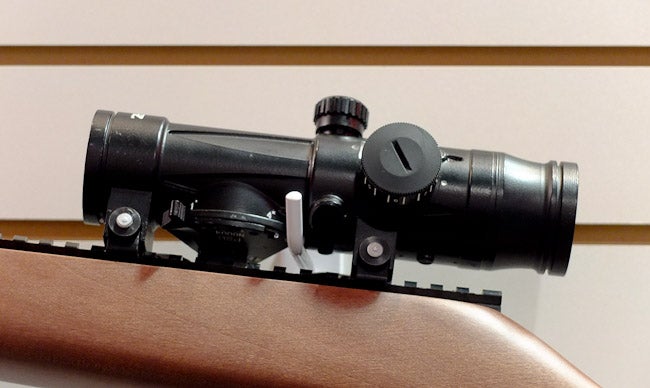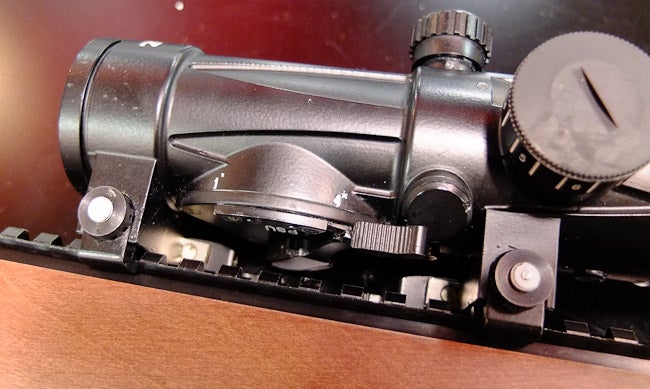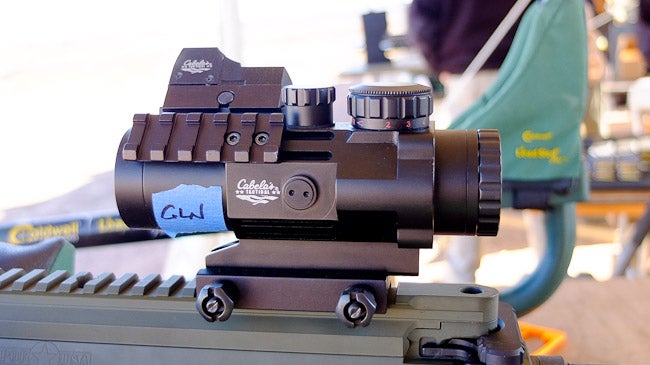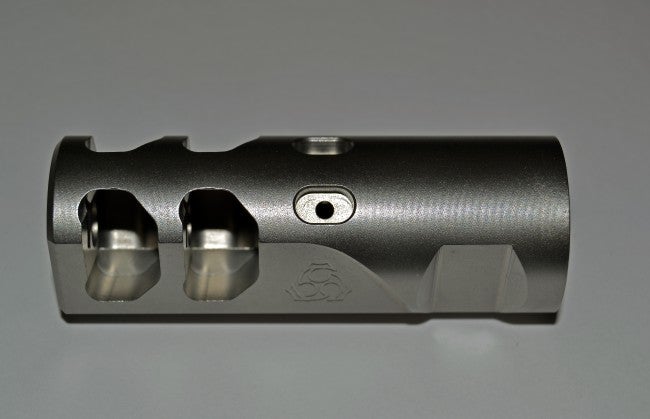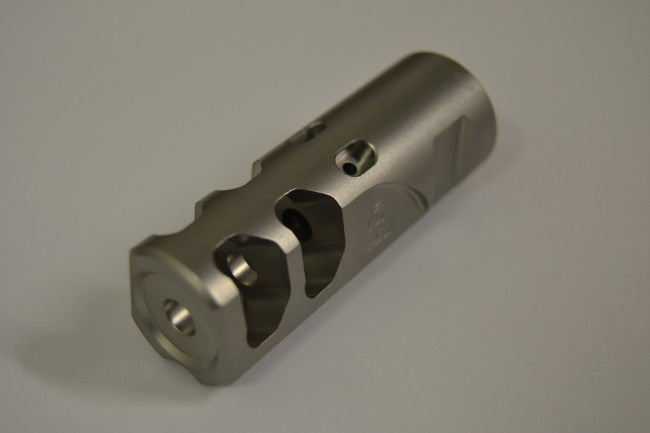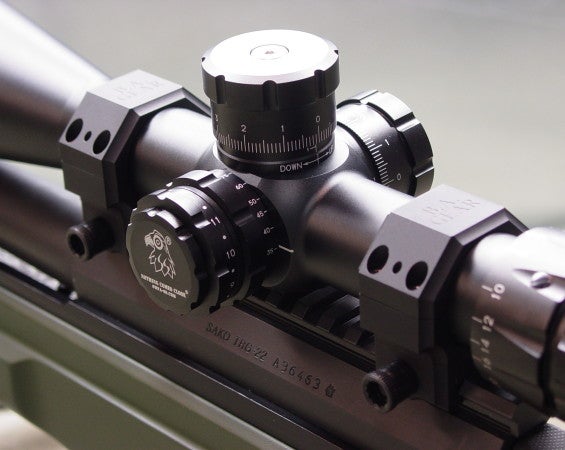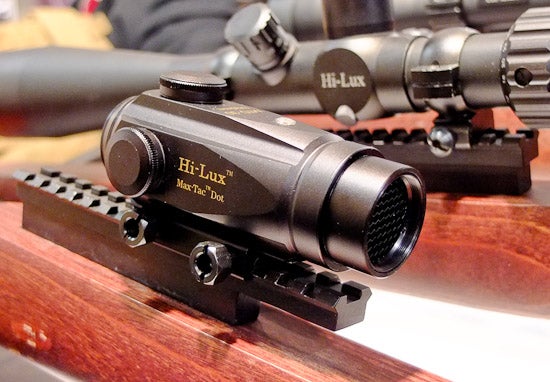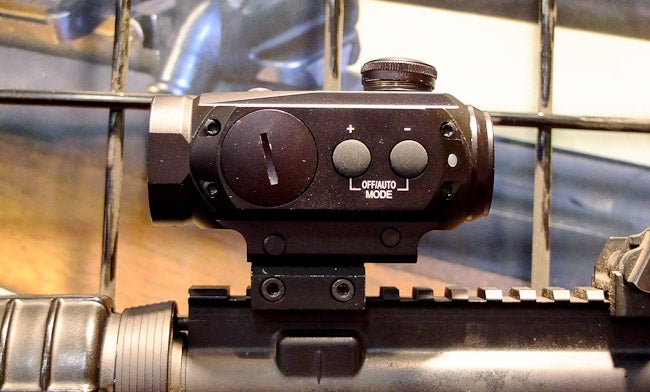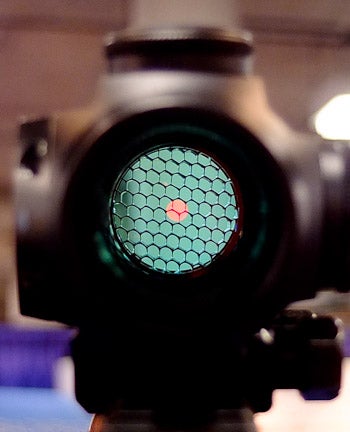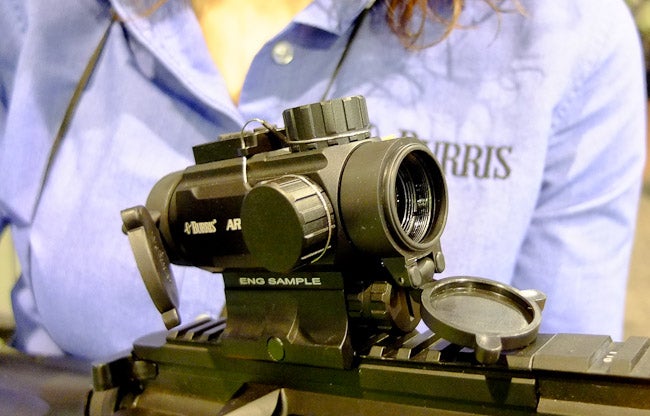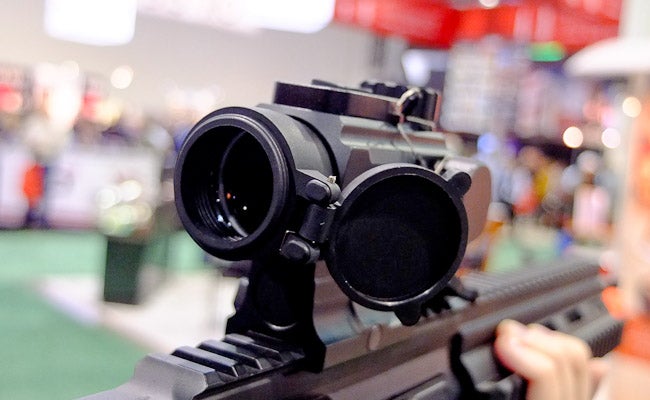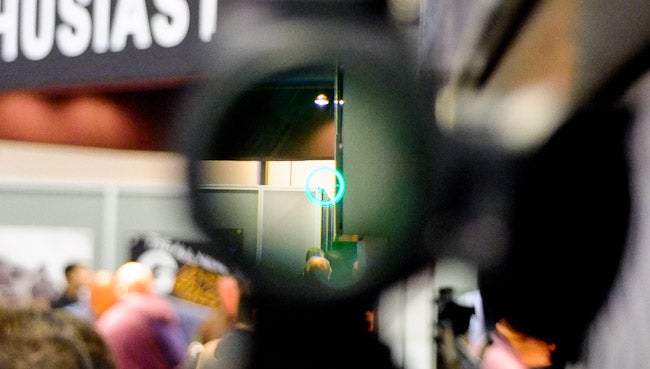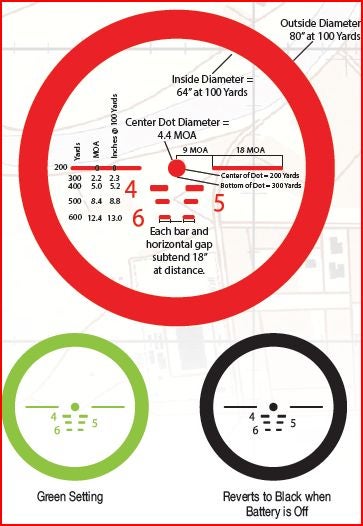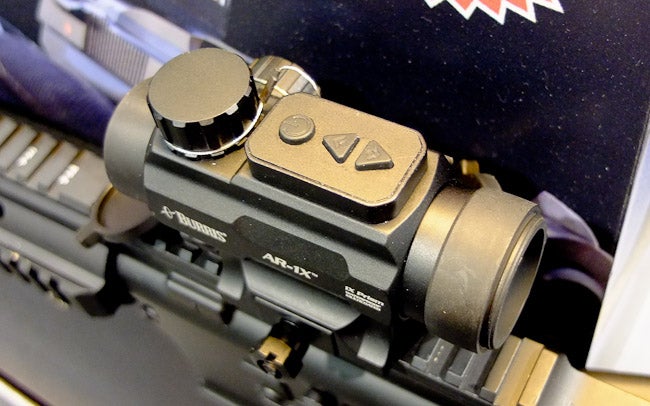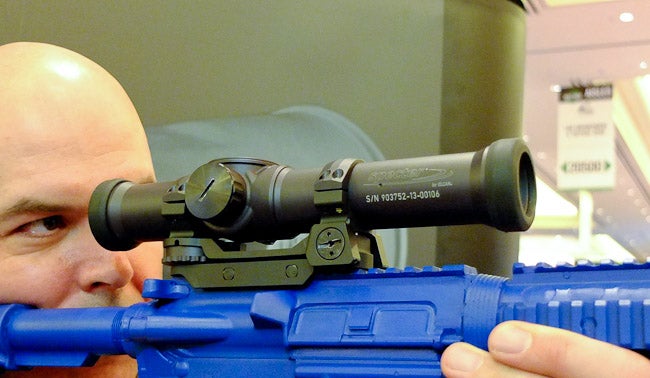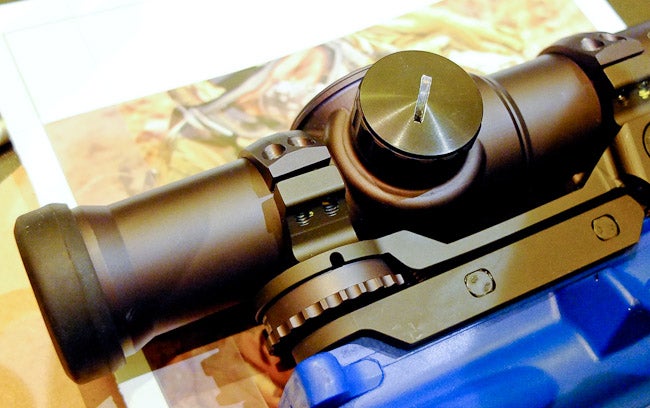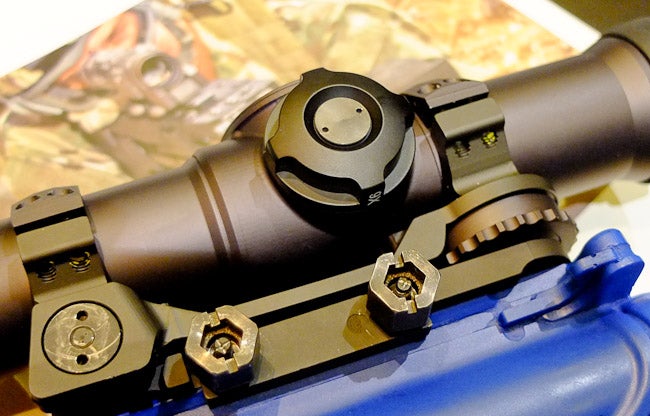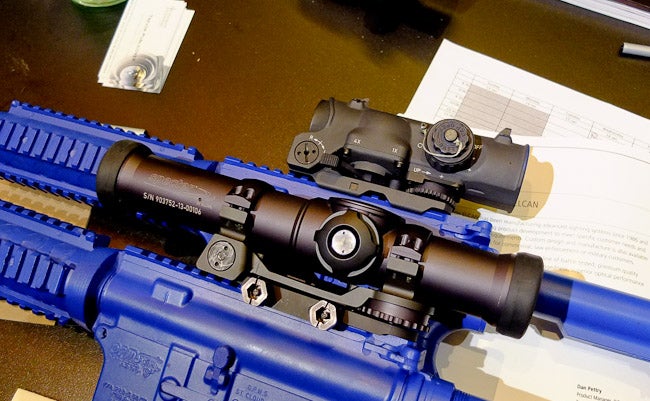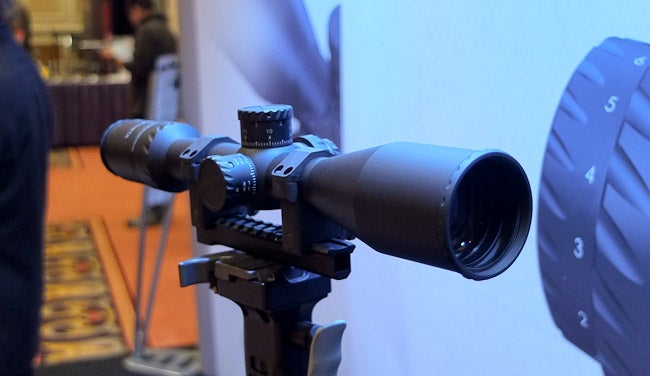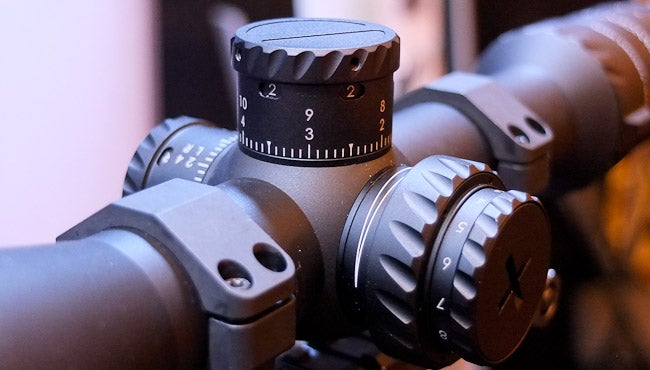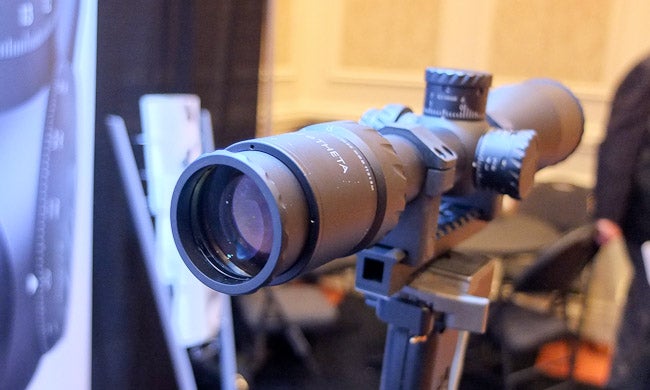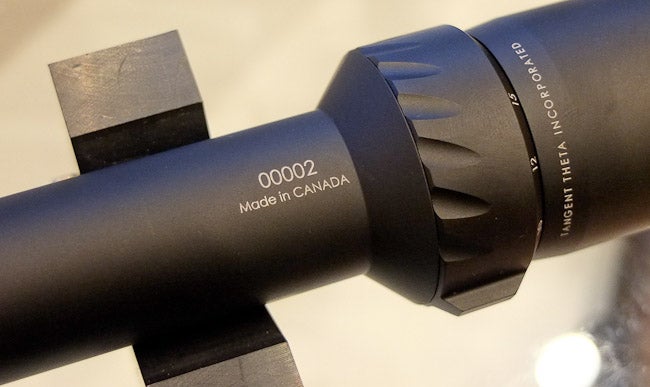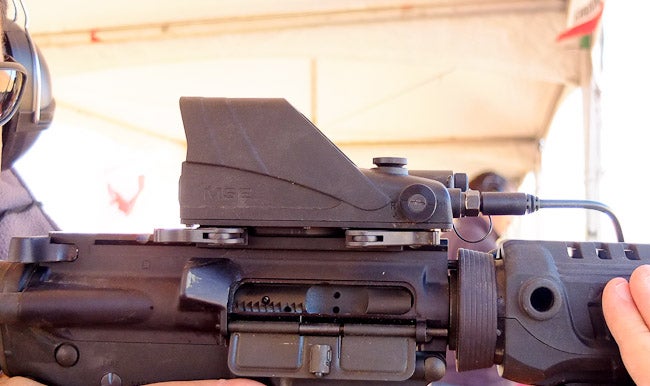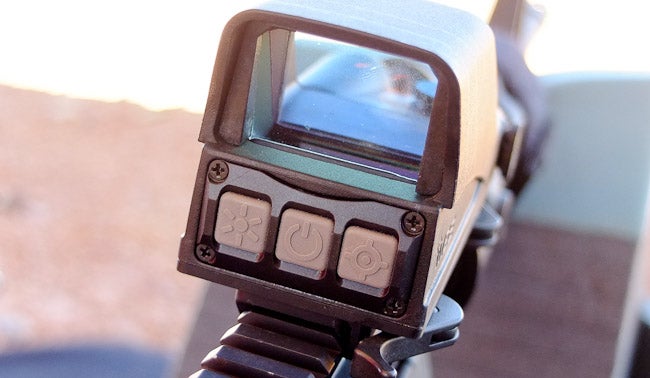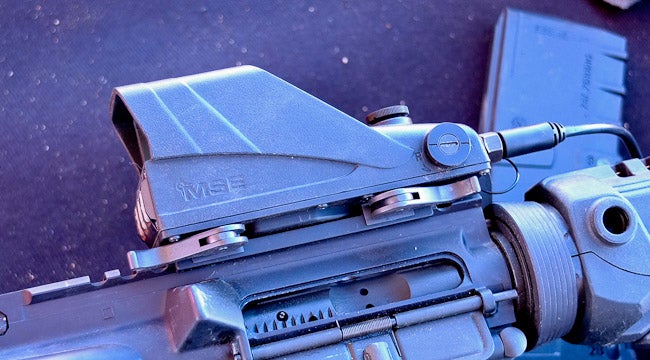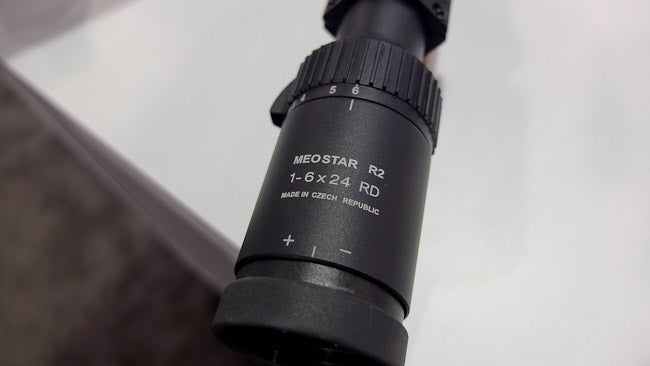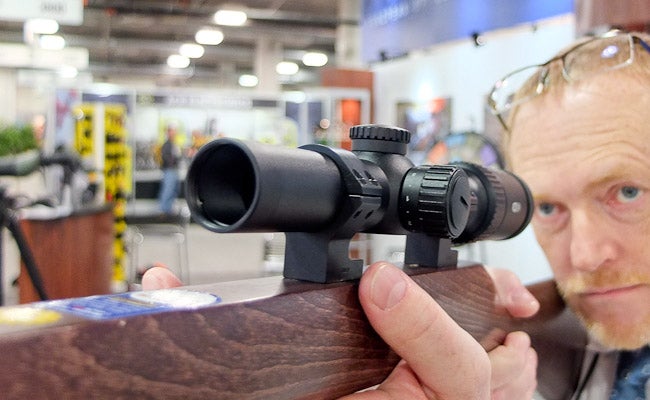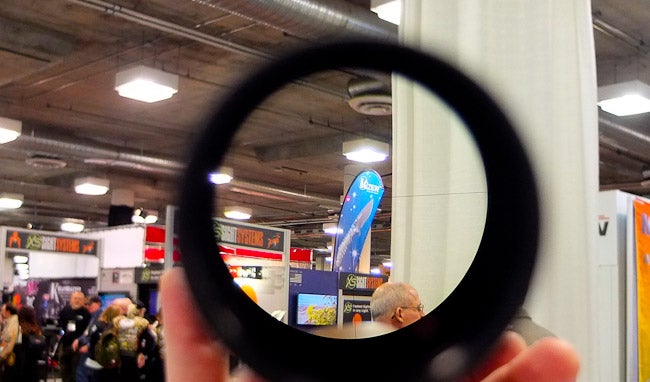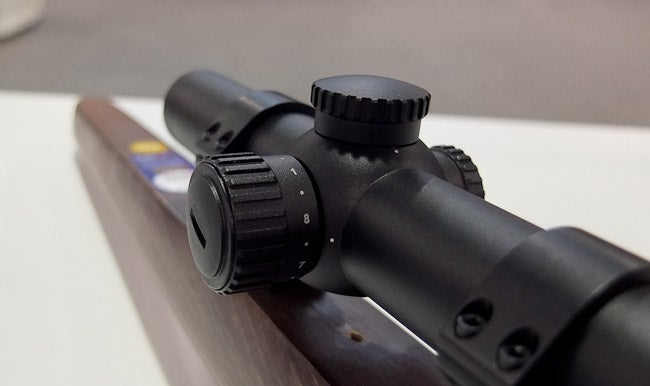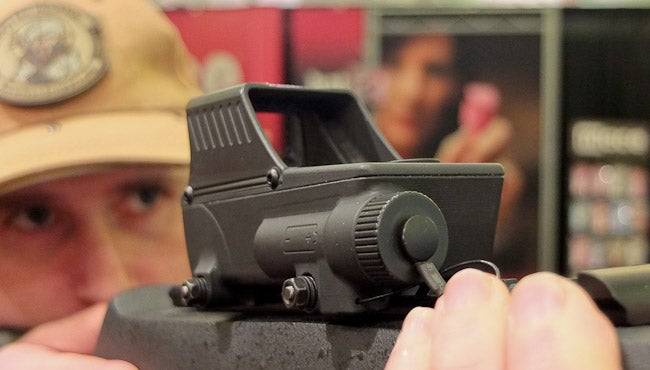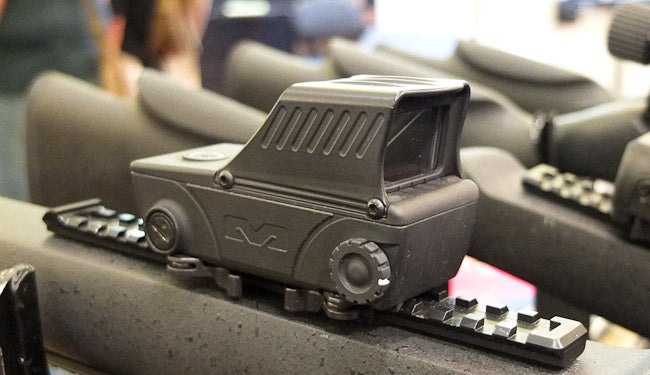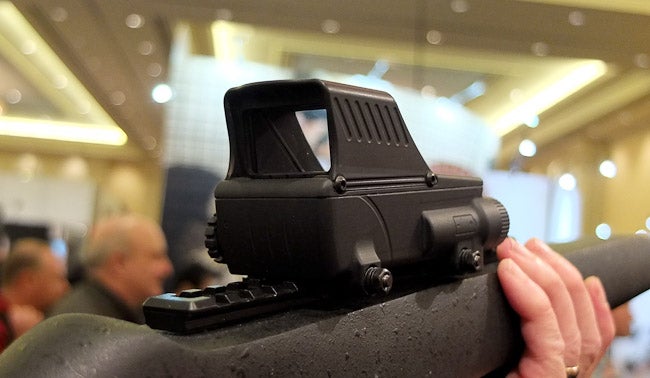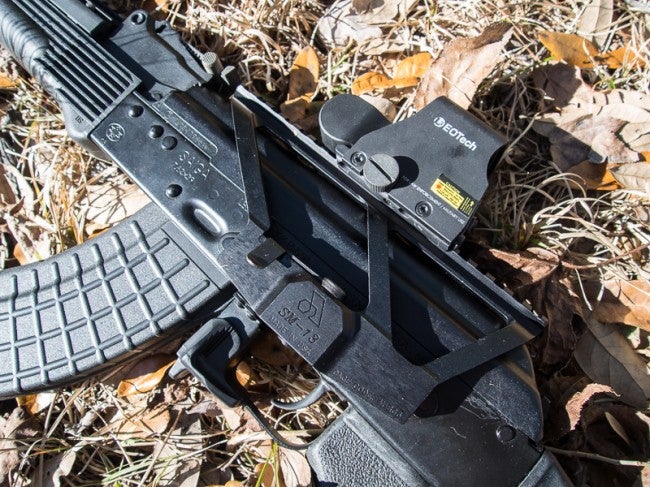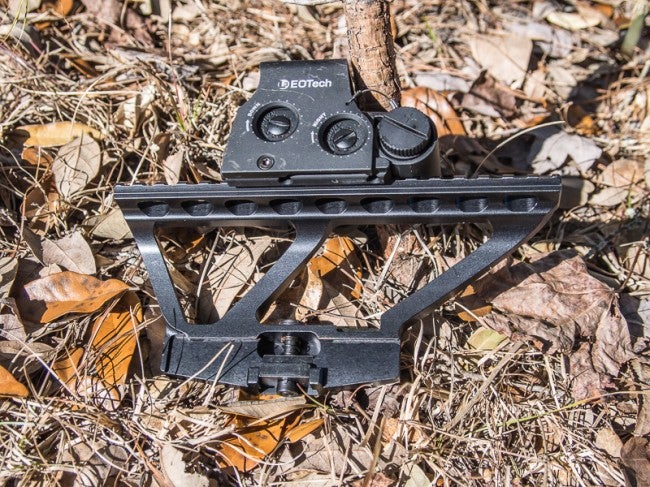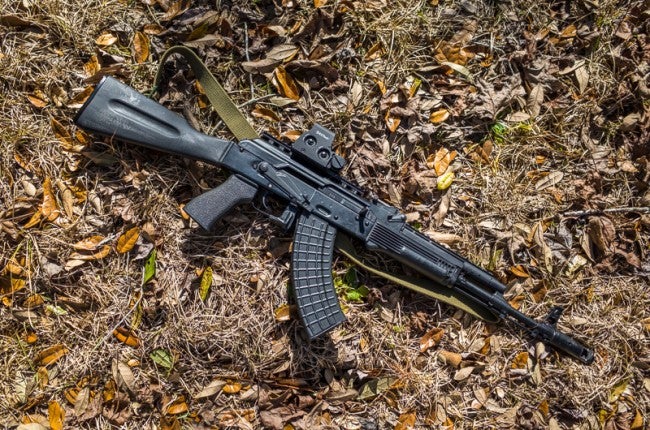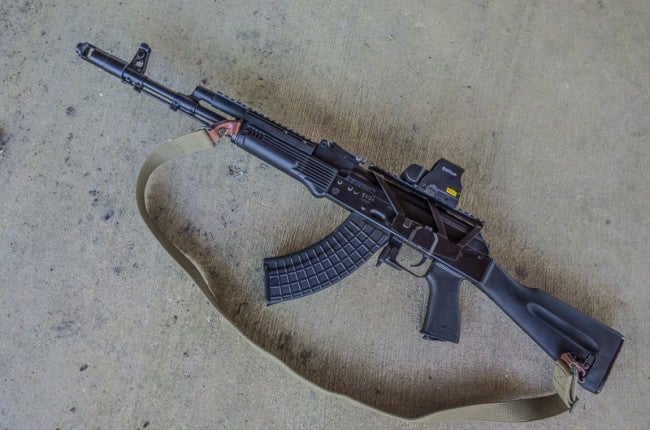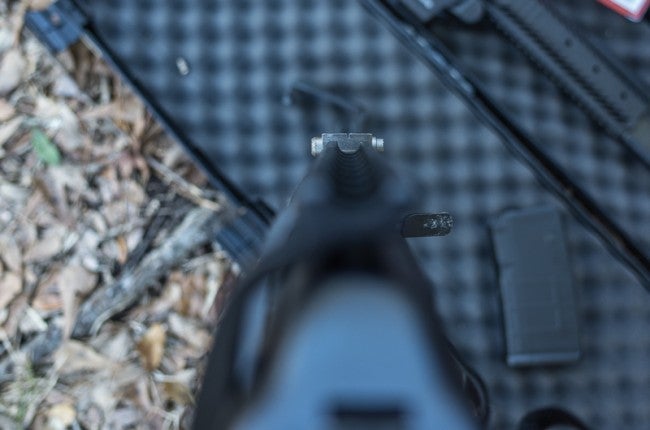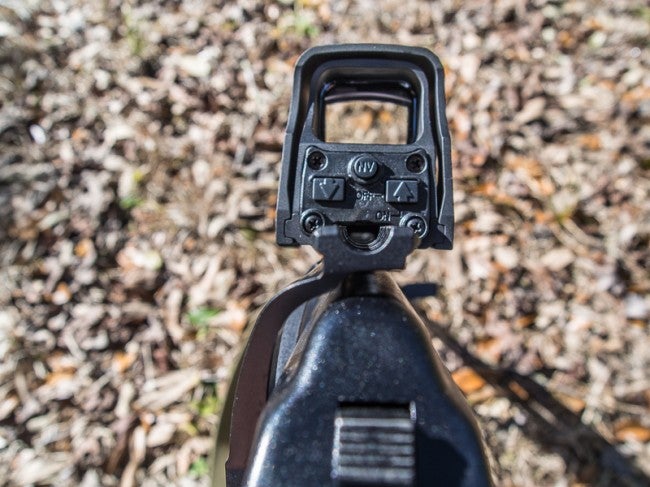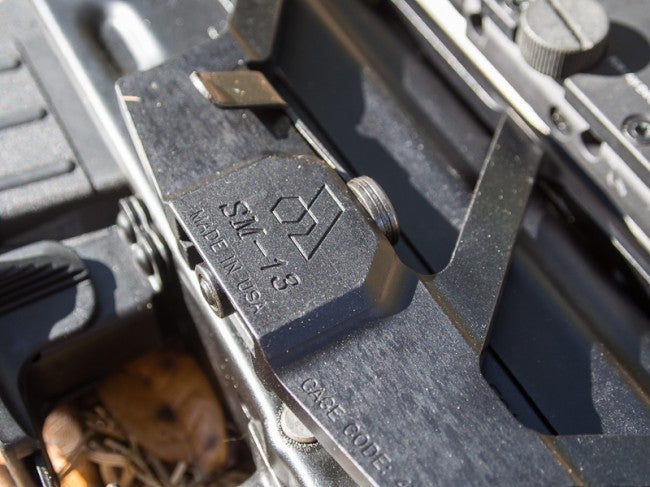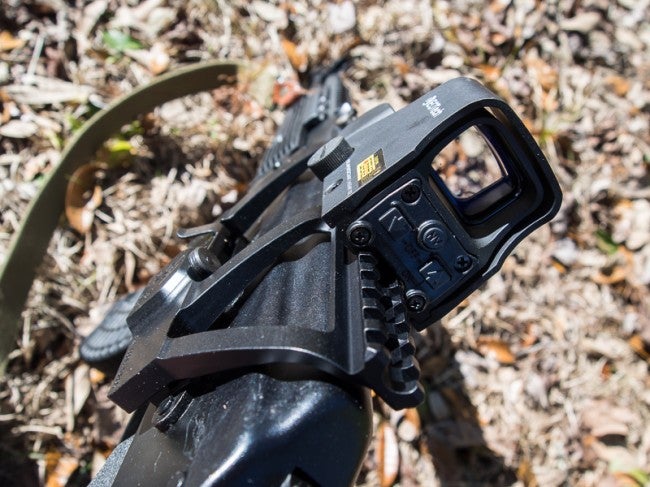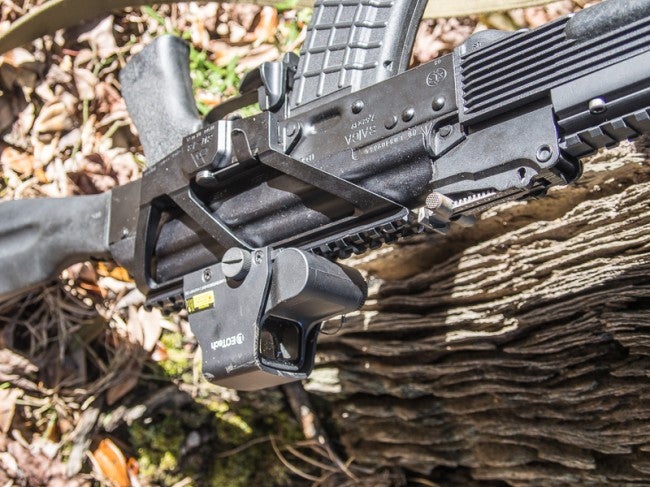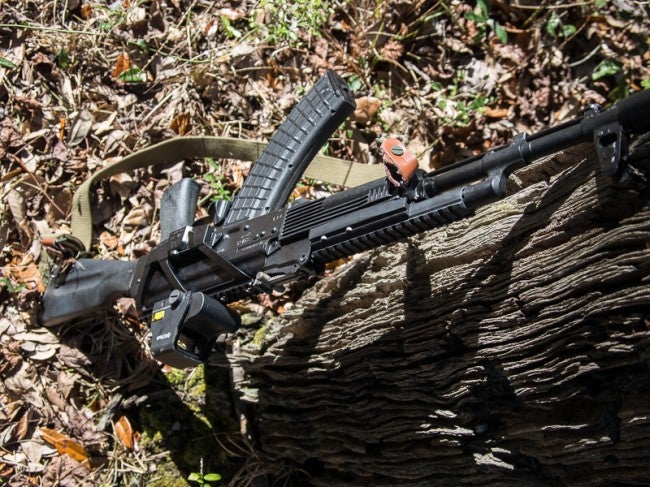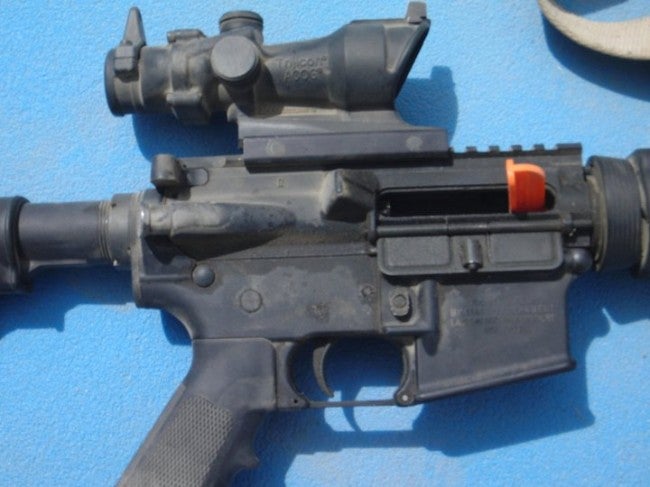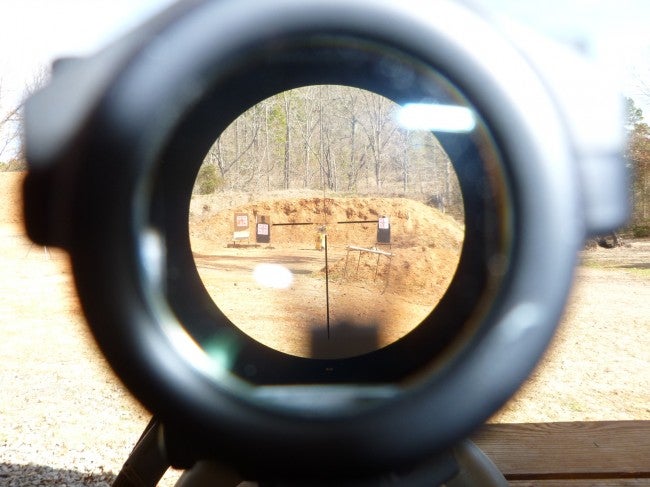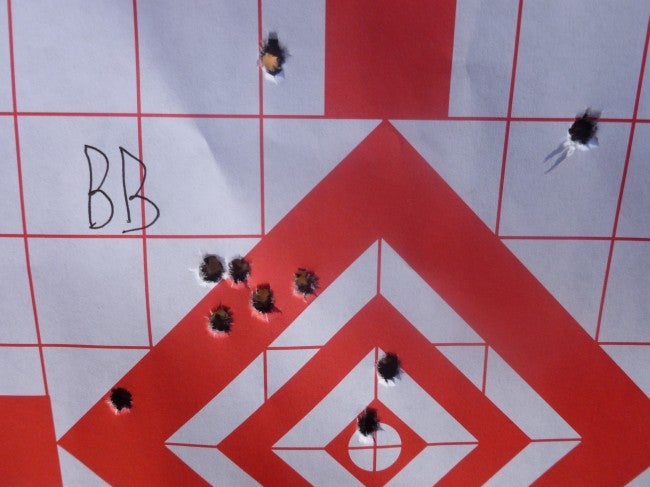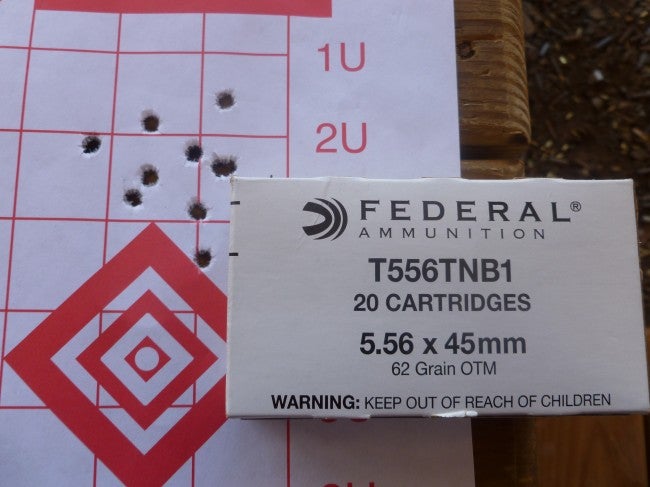![TFB-10]()
Optic mounting on an AK is problematic for two reasons: one, the platform is not ideally designed for optics mounting. Second, when an AK operator does decide to shoehorn glass onto this six-decade-old design, there are actually many good options for solid mounting available, and the decision can be just as tough.
Fortunately, (or perhaps unfortunately for those of us who are already suffering from choice paralysis) Arsenal’s SM-13 mount is another a good option to add to the pool of effective optic mounting choices. Not only is it a solid and easy-to-install mount, but the Arsenal SM-13 has some other features that set it apart from other models.
![TFB-7]()
The SM-13 is a one-piece CNC machined mount made of “aircraft grade aluminum alloy”, according to Arsenal. The mount only weighs 5.76 ounces, but offers over 7.5 inches of top rail real estate. It is made in the USA.
As a first impression, the lightweight SM-13 comes in an airtight plastic bag with straightforward directions on the front. Minimal packaging and simple directions are always a plus. The SM-13 installs on your AK’s “universal” side optics mount quite easily (see this article from RussianOptics.net for an exhaustive explanation and history of the AK side rail), however, anyone who has owned more than one AK or who may have bought “one-size-fits-all” AK accessories knows that there sometimes needs to be room for spec variations in an AK. That is to say that, most likely, the same particular part on a Russian and a Bulgarian may not be the same part at all, mags that are tight in your Yugo might flop around in your Norinco, and for that matter, the same part on two WASRs may not even interchange between them. Arsenal has solved this potential issue, however, with the SM-13. On the inside of the SM-13, there are two pieces of rail that slide onto your side mount. After you slide the mount on, a half-turn of the QD lever slightly compresses the rails, ensuring a tight fit. However, what if, after locking the QD lever you have a little play? Or worse still, what if the SM-13 won’t fit your side rail at all?
Arsenal has already considered this, and allows the user to simply, securely, and very precisely adjust the SM-13’s mounting rail width. The width is determined by a threaded stop castlenut that will only allow the rails to expand to a certain width. Once the screw is set, the rails will stay that width apart until the stop nut is adjusted. To adjust it, simply press the rail jawpieces together to remove pressure from the stop nut. While keeping pressure off the nut, screw it or unscrew it to tighten or widen (respectively) the gap between the SM-13’s mounting rails. This takes maybe sixty to ninety seconds of trial and error, and once you have the mount just loose enough that it slides onto the side rail with only minor friction, then you slip it on and give the QD lever a twist. Your mount is now lock tight.
![TFB-11]()
The tensioning hardware is visible at the lower portion of the mount from this angle.
There are many mounting solutions that offer a solid mounting surface, and many of those also offer a smooth quick disconnect function as well. However, the real test is which of those mounts will hold zero when installed, shot, removed, re-installed, shot again, removed again, once more remounted, etc. The Arsenal is no cause for concern here. The sample we received held zero all day at 50 meters after being installed, banged around with regular use, shot, removed, re-installed, shot again, so on. And with an EOTech at 25m, the SGL-21 used in conjunction with this optic produced one hole in paper over a series of multiple groups after the optic mount had been removed and re-installed several times. It appears, then, that if you install this mount properly (which, as mentioned, is not difficult), you will be rewarded with repeatable zero after multiple dismounts and remounts.
![TFB]()
Further, there are smaller details that make the SM-13 a front-runner in this category. First, the mount is very, very low-profile and sits only millimeters above the receiver. This allows a tighter, shorter sightline to bore-axis, which allows the shooter to minimize the compensation required by trajectory arcing. In other words, your AK can shoot a little flatter if you so elect, and this is valuable to many shooters.
However, this can lead to an issue – a low mount will occlude the shooter’s view of the front sight. Indeed, many of these mounts are high mounts to allow for “peep-through”, where a mount is elevated to the point where the operator can see his sights beneath the mount, and alternate between the optic and the irons as he pleases. The drawback, of course, is that your bullet’s trajectory is going to have a more exaggerated arc to compensate for the higher mounting. Also, mounts like this can tend to get in the way of charging the gun, but the SM-13 is unobtrusive in this regard.
![TFB-3]()
Again, Arsenal has addressed this issue in advance. While the top of the mount is front-to-back 1913 Picattiny Rail, ready to accommodate your standard RDS, reflex, or rings, there is a semicircle groove that bisects the rail segments, forming enough of a trough to allow the user to use iron sights, even with the mount installed. While I note that a low-slung optic like an EOTech or optics using solid bases like LaRue QD mounts may still block the front sight, at least the option to leave the mount in place and use the irons while still offering a low mounting solution may be preferable to the peep-through compromise.
![TFB-5]()
As seen here, the sights are visible through this mount when installed.
![TFB-9]()
However, as seen here, the sights are not visible with a low-pro optic in place.
As stated, the SM-13 is lightweight at 5.76 ounces, but robust nonetheless. As seen, it has three cross members that connect the side mount point with the top mount it provides, which gives it an appearance like it could take some real abuse. The fit and finish are excellent, and the flat black anodizing will go well with about any AK. The only negative I perceive is that the QD lever itself is a very thin steel that feels like it could be bent if the wrong sort of pressure is applied, but given how neatly the lever tucks into the mount when in use, this is unlikely.
![TFB-6]()
Close-up of the QD lever.
In summary, the SM-13 offers a solid, versatile, and easy to install mount that holds zero when in use, and even when removed and reinstalled. Additionally, Arsenal’s SM-13 is well thought out, offering a lot of rail (7.5 inches) while maintaining light weight, and providing a low mounting axis, while still permitting the use of the AK’s iron sights. Finally, the fact that it is tension-adjustable all but guarantees fit on your AK. As said, there are a lot of options when it comes to AK mounting solutions, but Arsenal’s SM-13 gives the shooter everything he needs and at a fair price on par with other top of the line mounts, and is deserving of serious consideration when shopping for an AK mount.
![TFB-2]()
![TFB-4]()
![TFB-8]()
![TFB-12]()
![TFB-13]()
![TFB-14]()

